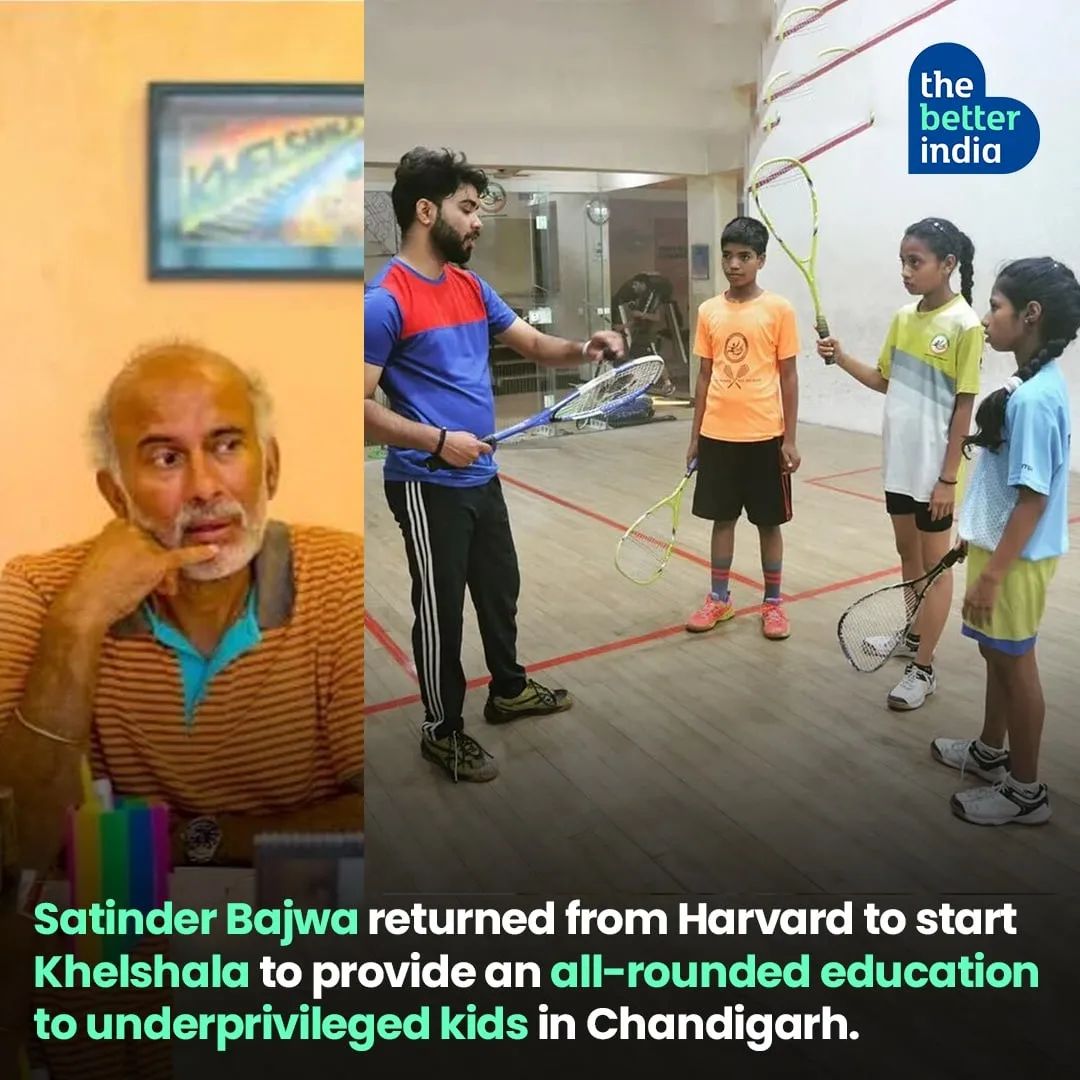
Billion Plus is an engine of the Sports and Society Accelerator focused on social impact programs using sport.
#MakingSportWork
We celebrate the potential of sport to build a #BetterIndia with opinion pieces, stories and profiles of how sport can improve the lives of every Indian. Read more from this exclusive series by The Better India and Sports and Society Accelerator
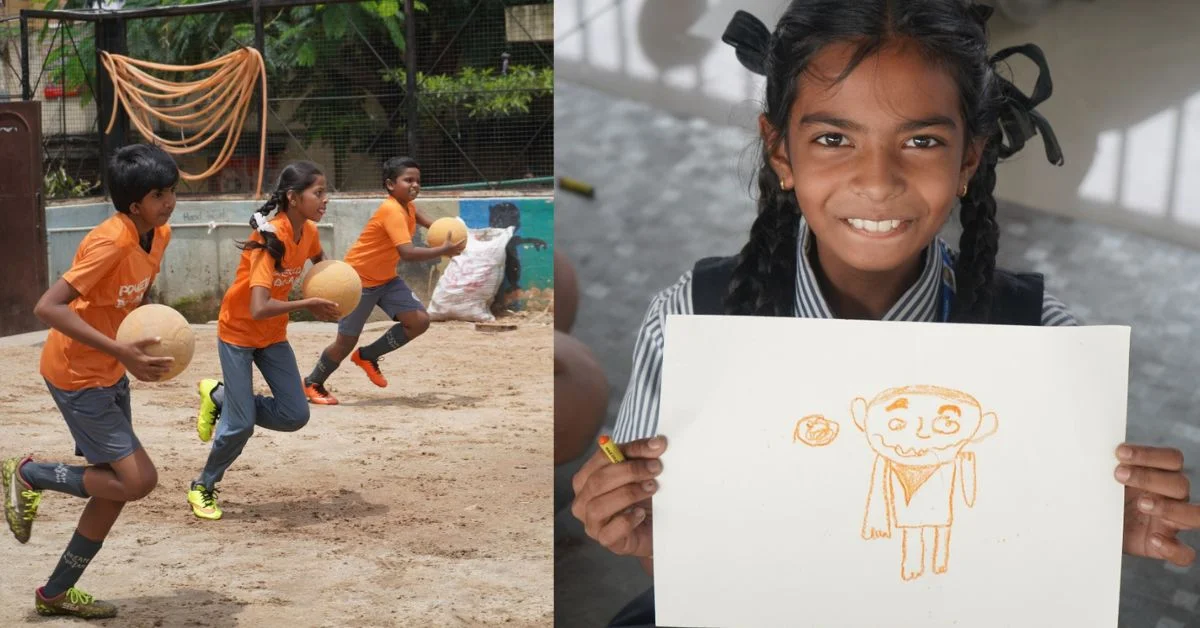
How a Unique Life Skills Approach Is Helping 2.2 Million Indian Children Overcome Adversity
After his graduation, Bengaluru-based Vishal Talreja got a chance to visit Finland, where he noticed a significant emphasis on the idea of dignity of labour and the high quality of life that people enjoyed, irrespective of their background and the nature of their job.
“It got me thinking about my own upbringing and the caste-class system surrounding us. I wanted to go back to India and change the way we look at dignity here,” he says.
Upon returning to his homeland, Vishal decided to dedicate his weekends to meaningful volunteer work. He focused on assisting youth from underprivileged and vulnerable backgrounds where they were exposed to issues such as malnutrition, abuse, and exposure to crime at an early age. Education and life skills were not prioritised for this group, prompting him to offer his support.
Through various connections, he met a group of passionate people, all in their early 20s working in the IT sector in Bengaluru, Pune, and Delhi. Although they didn’t specifically know each other, they shared a common goal to build a roadmap that would give them a clear sense of purpose. Vishal and a team of 10 others established ‘Dream a Dream’ — a non-profit organisation dedicated to transforming the life experience of vulnerable children in Bengaluru.

They started with an after-school programme in Bengaluru to teach essential life skills to children — such as teamwork, problem-solving, and critical thinking — utilising sports and creative arts as mediums.
What started as a weekend initiative has now evolved into a full-fledged organisation that spearheads life skills education in Indian public schools. “When we founded Dream a Dream, we never expected to become a national organisation transforming education for millions of children,” says Vishal.
Their work has expanded to six states including Karnataka, Delhi, Jharkhand, Uttarakhand, Nagaland and Telangana — all in partnership with the respective State Governments.
How we turned our dreams into reality
At first, the group began their work with a community of children affected by HIV, investing considerable time to bring joy and happiness in their lives. By 2001, they had also started working in a care home catering to these children.
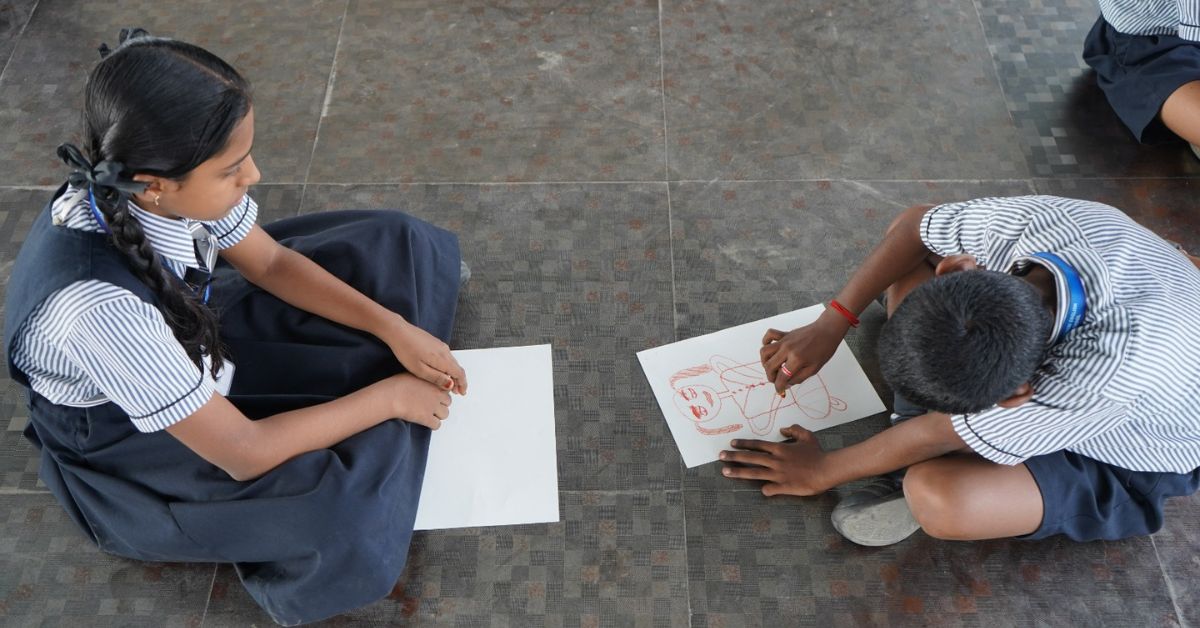
“At that point, Brinda (one of the founding members) was able to get two to three international volunteers, who organised a creative art therapy programme for the kids. It was a three-month weekend programme, and we saw a mind-blowing transformation among the kids. That was the first time we saw the impact of experiential learning in children,” says Vishal.
The art therapy programme encouraged them to widen their focus on empowering children from vulnerable backgrounds. Within two years, the organisation grew from 11 to 300 volunteers.
While working with care homes and orphanages, Vishal understood the complexities the kids faced. “Most of the care homes did great jobs to take care of the children’s basic needs and keep them off the streets but they didn’t necessarily prepare the children for life outside the home. A lot of the kids would end up returning to their care homes after a year or two of being outside post 18 years of age,” he adds.
During this period, the organisation integrated sports, arts, theatre, music, and various crafts into their weekly life skills education programme, using a unique life skills approach focused on the transformation of every child.
Pavithra KL, who is an alumnus of Dream a Dream, explains, “The programme is about helping children understand who they are, what are their strengths, what is their support system, and what are their dreams and aspirations.”
Dream a Dream programmes — such as Direct Impact, Systems Demonstration, and Building the Field — focus on implementing a life skills-oriented curriculum, pedagogy, new teaching methods, teacher training, and comprehensive assessments.
Under their ‘Direct Impact’ programme, the organisation employs a demonstrable model in both in-school and out-of-school learning spaces. It directly engages with 10,000 young individuals aged 8 to 23 each year, offering innovative education opportunities through sports and arts. This approach fosters crucial life skills like teamwork, decision-making, problem-solving, and critical thinking.

Additionally, the programme aids individuals aged 15 to 23 in preparing for an ecosystem that necessitates skills such as computer education, spoken English, communication skills, money management, and workplace readiness.
The ‘Systems Demonstration’ programme aims to transform public education systems in collaboration with the government. The organisation has effectively trained over 35,000 teachers and educators in the life skills approach. This training enables them to create safe learning environments within their current classrooms and expand their influence, concentrating on curriculum, teaching methods, and evaluations.
In addition, in partnership with state governments, the organisation is introducing new curriculums such as the Happiness Curriculum in Delhi, Anandam Pattacharya in Uttarakhand, a whole-child development pedagogical approach in Jharkhand and a Life Skills Curriculum in Nagaland and Telangana. The organisation also support the state education departments with new pedagogical approaches, teacher training and introducing new assessment frameworks.
The ‘Building the Field’ strategic approach is working to enable a mindset shift among diverse stakeholders in the learning ecosystem to bring in a collaborative approach to education, encompassing the broader community, decision makers, professionals in various fields, parents, teachers and other stakeholders.
The organisation intends to maximise impact through large-scale dissemination of real world research findings, engage in critical dialogues to listen to diverse narratives of success, amplify young people’s voices through collaborations and advocate for thriving as the purpose of education by weaving together people, places and voices supported by high impact research.
Spearheading change through sports
Dream a Dream works with both affordable private schools and State Governments. For instance, they partnered with the Delhi government and other nonprofit organisations to implement the world’s largest in-school Social and Emotional Learning (SEL) curriculum — the Happiness Curriculum — launched in 2018 by the Delhi Government to enhance students’ mindfulness and positive productivity. This initiative positively impacts eight lakh children in the national capital.
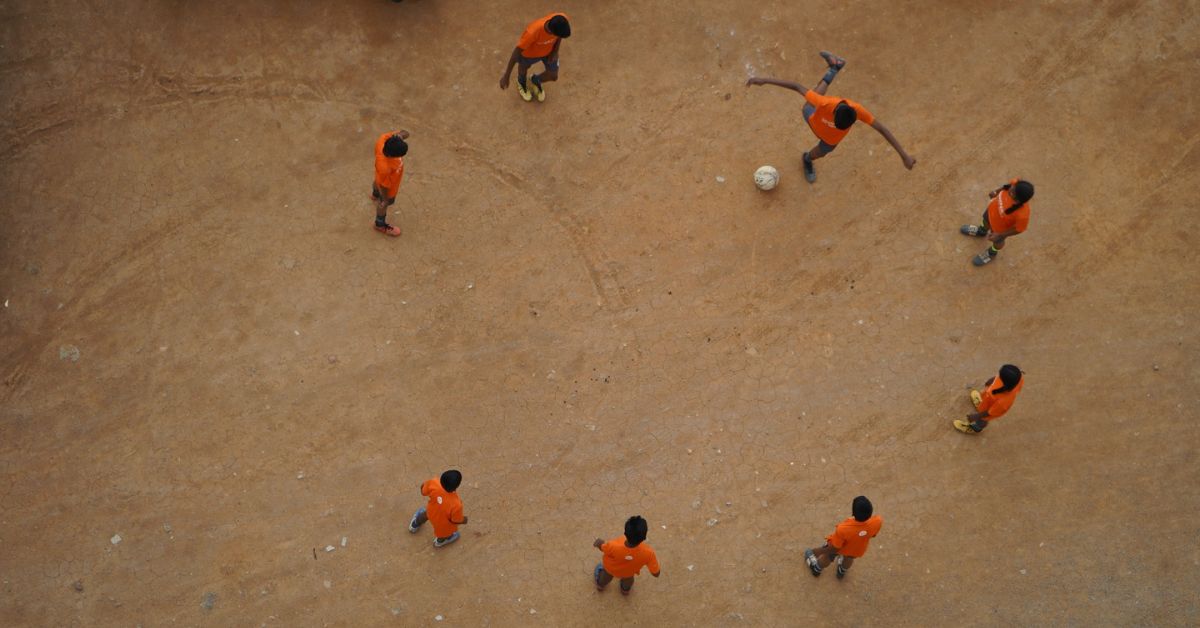
Pavithra, currently the associate director at the Innovation Lab, which creates skill development modules for young people, states that Dream a Dream offers children numerous opportunities to participate in various games like hockey, rugby, and table tennis. Recently, they have exclusively emphasised football.
“Football allowed us to include as many people as possible given its popularity. We could get many young people to play as it didn’t need a lot of equipment,” she says, adding that the football programme at Dream a Dream includes a weekly two-hour session.
Pavithra further explains that children typically join the programme at the age of eight, mostly in Class 4, and can select between the creative arts and football programmes, each lasting for seven years.
So far, the initiative has impacted over 2.2 million children across the country, she informs. Among them is yet another alumnus Ranjith H, who, at the age of 12, used to play kabaddi in school.
In 2008, driven by curiosity about rugby, the jersey, shoes, and weekly snacks offered to participants, he enrolled in the rugby programme. “At the time, my father would load or unload goods in the market whereas my mother worked in the garment industry. Because of financial constraints, we did not get good quality food at home. I mostly depended on the snacks provided by Dream a Dream,” he shares.
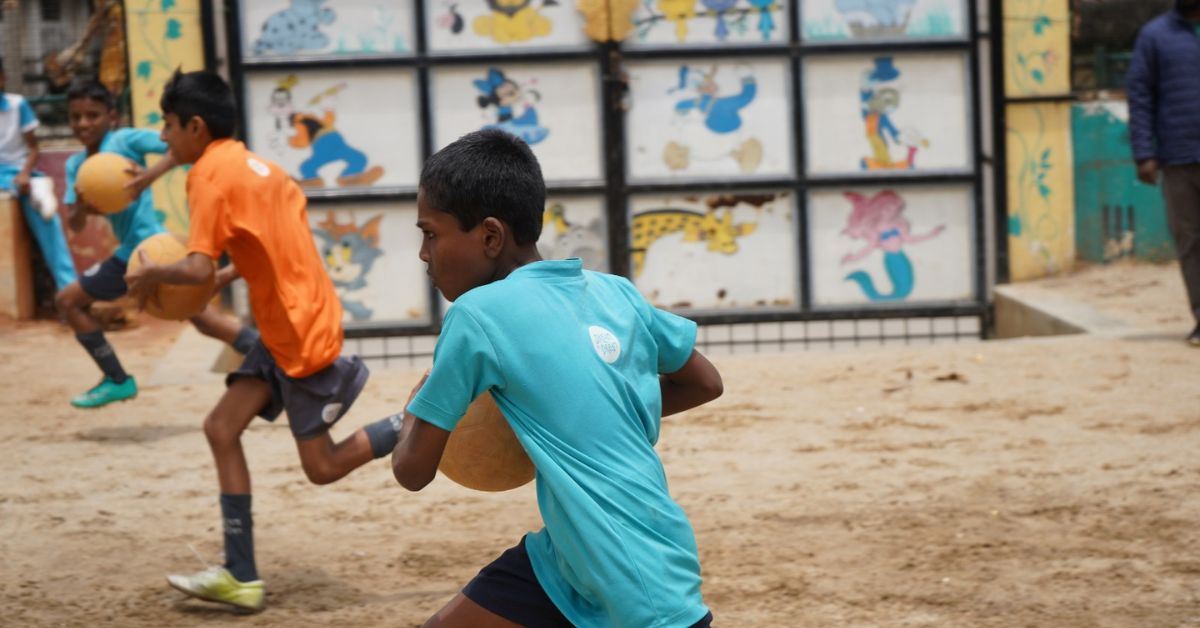
To support himself financially, he took on part-time jobs, including assisting in garment work and distributing newspapers. Despite the challenges he encountered at home, within a few years, Ranjith was competing at the national level for Karnataka. Travelling to rugby tournaments and meeting people from other parts of the country gave him the confidence to come out of his shell.
“That was the time I learned how to talk to people. I was not scared of playing rugby but I was scared of talking to people before!” he says.
Later on, Ranjith completed his Class 10 and went to college. “I realised how much sports can benefit a person. My sports certificate helped me to get into college through the sports quota. I worked part-time and completed my college,” he says. After college, Ranjith joined Dream a Dream as a football facilitator.
The fundamental goal of the organisation is to ensure that no child they work with is left behind. “Can we ensure that each and every young person feels a sense of support and is moving forward? Even if they have failed academically, are they thriving? Can they still look forward to a life with dignity?” asks Pavithra.
“As we are learning more about young people, we are working to re-imagine the purpose of education in the 21st century towards the idea of Thriving,” she remarks.

This Initiative Is Helping 4 Lakh Adolescents Break Barriers Through Sport
There was a time when Vidya Tamkhane was afraid to even step out of her house.
When she was in Class 10 back in 2013, her brother took her to the playground and introduced her to kabaddi. She resisted participating at first, but he encouraged her to play. It wasn’t long before she fell in love with the game, she recalls, and the trajectory of her life changed.
Instead of simply accepting that she would get married when she reached a certain age, she became determined to make her own decisions. Last year in 2022, a few years after she got her undergraduate degree, she interviewed with Magic Bus India Foundation and was hired as a kabaddi coach in Chandrapur, Maharashtra.
“The [traditional] thinking is that boys should work because they have a family to feed, while girls are expected to get a good-looking husband with a government job. But my brother changed this outlook and supported me,” Vidya says.
Vidya (left centre) with the other coaches in Chandrapur.
Her job with Magic Bus inspired her to venture even further outside her comfort zone. She acquired the skills to effectively communicate with school principals about the value she gained from the sports-for-development and life skills education programmes of Magic Bus, and to persuade parents to enroll their daughters.
“Permission from parents is very difficult at times,” she explains. “They feel [it is] unsafe. It was very difficult for me to win their trust, but I did it.”
Vidya was one of six female kabaddi coaches from similar backgrounds and ages (between 23 and 25) who joined Magic Bus around the same time. The other coaches were Komal Pachare, Nilam Verma, Shital Borkar, Poornima Chandekar and Reema Khushwah, who shared a common goal — to empower girls through sports, just as they were.
The coaching sessions continue in Chandrapur
All of them are part of Magic Bus’ School Completion and Livelihood Enablement Programme in Chandrapur. The purpose of the programme is to train teachers to deliver life skills education to adolescents from Class 6 to Class 10 in collaboration with the government. Operating in Chandrapur proved to be a success, leading to Magic Bus initiating a partnership with the government to further expand their impact.
Magic Bus, founded by Matthew Spacie back in 1999, has impacted the lives of more than one million adolescents over the past two-plus decades. At present 3,94,206 adolescents are enrolled in their programmes across 2,770 schools.
Reflecting on the initial days, he says, “About 30 years ago, when I arrived in Mumbai, I couldn’t ignore the stark contrast in living conditions within the city. On one side, there was a sizable middle-class population, living fairly ordinary lives. On the other side, there was a parallel reality of people living in poor conditions.
As an outsider, this divide deeply affected me, compelling me to respond in some way. However, there was a personal connection that played a significant role in shaping my vision for Magic Bus.
Sports for development
Magic Bus India Foundation is a pioneer in the life skills education and skilling sector in India. Their mission, as Matthew states, has always been to help young people. “When we started Magic Bus, our aim was to help young people thrive and find happiness and success. We took them on mountain trips and engaged in various activities to boost their resilience and happiness. Our community-based mentors played a crucial role, serving as role models who had conquered similar challenges. For me, the importance of mentors became evident early on. Within five years, our approach transformed from me playing rugby with young men at the Gymkhana to engaging 10,000 adolescents and young people across Mumbai in a life-changing programme led by mentors from their own communities.”
Now, the organisation implements a sports and activity-based life-skills programme with the goal to equip adolescents with essential life skills and facilitate a smoother transition from school to the workforce. It operates in 24 states across 72 districts in India.
Magic Bus has played a pioneering role in introducing sports-for-development and life skills education in India and Southeast Asia. “Currently, we empower individuals to acquire essential life skills through sports. By gathering on the playground, we especially empower girls to assert their presence in a domain traditionally reserved for boys. We aim to challenge gender stereotypes, encouraging girls to break barriers while fostering equal participation from boys,” says Jayant Rastogi, Global CEO, Magic Bus India Foundation.
Jayant Rastogi, the Global CEO of the Magic Bus India Foundation
The organisation shows that adolescents in its programmes improved their school regularity by 21.8%, a 31% increase in perceived self-efficacy, and a 34.7% boost in resilience.
In Baddi, Himachal Pradesh, a place where Magic Bus has actively engaged since 2015, a significant milestone was reached in March 2021. The organisation introduced a sports programme exclusively tailored for girls. Divided into two distinct phases from December 2021 to March 2023, this programme carries a primary objective of empowering girls aged 11 to 18 through the influence of sports.
According to Vivek Sharma, the programme manager, 10,000 girls were given sports sessions each in kabaddi or cricket. The girls also took part in tournaments within their schools. Some of them were then chosen to compete in district, state, and national tournaments.
The objectives of the programme also include the holistic development of the participants, which includes communication, socio-emotional learning, and education.
Vivek says they were able to succeed in Baddi because Magic Bus had earned the community’s trust first. “We had been planning since 2015. We worked with the girls, the boys and their parents and sensitised them [to the idea of a girls’ sports programme].”
The programme has also actively addressed common concerns raised by parents regarding the safety and expenses of the girls participating in tournaments held in larger cities. Recognising these concerns, the programme takes responsibility for the girls’ expenses and ensures their safety by arranging for accompanying coaches during their travel. In certain cases, the programme even covers medical expenses and provides first aid kits.
Vivek emphasises, “In this way, we address any doubts community members may have about the program, ensuring that their questions are answered satisfactorily.”
Matthew adds, “Initially, when I played rugby with young people, I believed that helping them secure jobs would lead to economic stability. However, we realised they weren’t ready for a structured work environment. This setback inspired our “Childhood to Livelihood” programme. We understood that getting them jobs was only half the battle; keeping them employed required equipping them with the right skills and guidance to enter the workforce. It’s where they grasp the value of work, learn skills beyond their chosen profession, and evolve into role models, actively breaking the cycle of poverty for their families and the entire community.”
‘Showed me the right path’
Vivek points to the example of Prachi, a young girl who had previously never left her village. Last year she travelled to a national athletic competition in Ranchi, Bihar. “Her parents were in complete shock that a girl who never left the home before has performed in this kind of event,” he says. “They said, ‘If you had not tried with our child, she would never have reached this level.’”
Bittu Kumari with some of her awards
Another girl who has benefitted from Magic Bus’ interventions is 17-year-old Bittu Kumari. She joined the programme in 2017 as a Class 8 student and says she learned life skills through volleyball and kabaddi (volleyball has since been replaced with cricket). According to her, Magic Bus helped her make the optimum use of her talent as a kabaddi player. “Now I am a state-level kabaddi player, and I want to play at the national level also,” she says. “If I had not found Magic Bus, I would not have made it this far. They showed me the right path.”
In the process, she has gone from being scared to speak to people to having the confidence to speak to anyone. “Magic Bus taught me communication skills, gave me confidence, taught me what is right and what is wrong,” she says.
Last year Magic Bus appointed Bittu as one of their community coordinators. While her ambition is to become an IPS officer, she also plans to play kabaddi for as long as she can. “My parents give me full support. They say, ‘When my daughter is on the right track, why would I stop her?’”
For Matthew, these stories motivate him further. “The emotional aspect of our work reminds me of our mission’s importance and the need to stay rooted in the communities we serve. By understanding their struggles and empathising with their challenges, we ensure our programmes remain relevant and effective. This powerful motivation drives our commitment to doing right by them and striving for continuous improvement.”

Not a Man’s Game: How a ‘Toofaan’ of Sports Is Helping 1,90,000 Girls Flourish, Thrive & Play
Ganga and Jamana are twin sisters who come from a small village in Ratlam, Madhya Pradesh. Their journey with sports has not been an easy one. Being residents of a conservative village in Ratlam, education was never a first choice, let alone indulging in sports.
After relentless persuasion, which went on for six months, their parents allowed the twins to join the Nanhi Kali after-school tuition centre run by the Naandi Foundation, where they received daily academic support. Soon, they took this opportunity to play sports, which was a part of this programme.
They demonstrated exceptional skill in sports, and were soon participating in the foundation’s in-house sports competition — the Toofaan Games.
The story of the Toofaan Games began in 2019 when Rohini Mukherjee, the then head of Nanhi Kali operations, thought it was time to introduce the girls to sports. “There are fundamental life skills that school classrooms can’t teach you – leadership, teamwork, facing failure,” she said. And that is where sports came in.
Around 1,90,000 girls, including the twin sisters, get at least 10 years of schooling and are introduced to sports once they are enrolled in this programme.
Currently, the Toofaan Games have turned into an annual sports gathering featuring four events. In the current edition that started in August 2023, almost all of the girls under their wing are competing right from the village level all the way to the nationals organised by the trust.
When the organisation first looked to introduce sports, they faced a challenge of not having anyone on the staff who could lead a sports-focused initiative. Fortunately, they found the right candidate in Lisa Murawsky, who has been an international sports consultant, educator and coach for over 20 years.
Rohini (now the Head of Global Partnerships and Strategy) and Lisa together created the ‘Sports for Life’ programme for the foundation, which led to the birth of the these games.
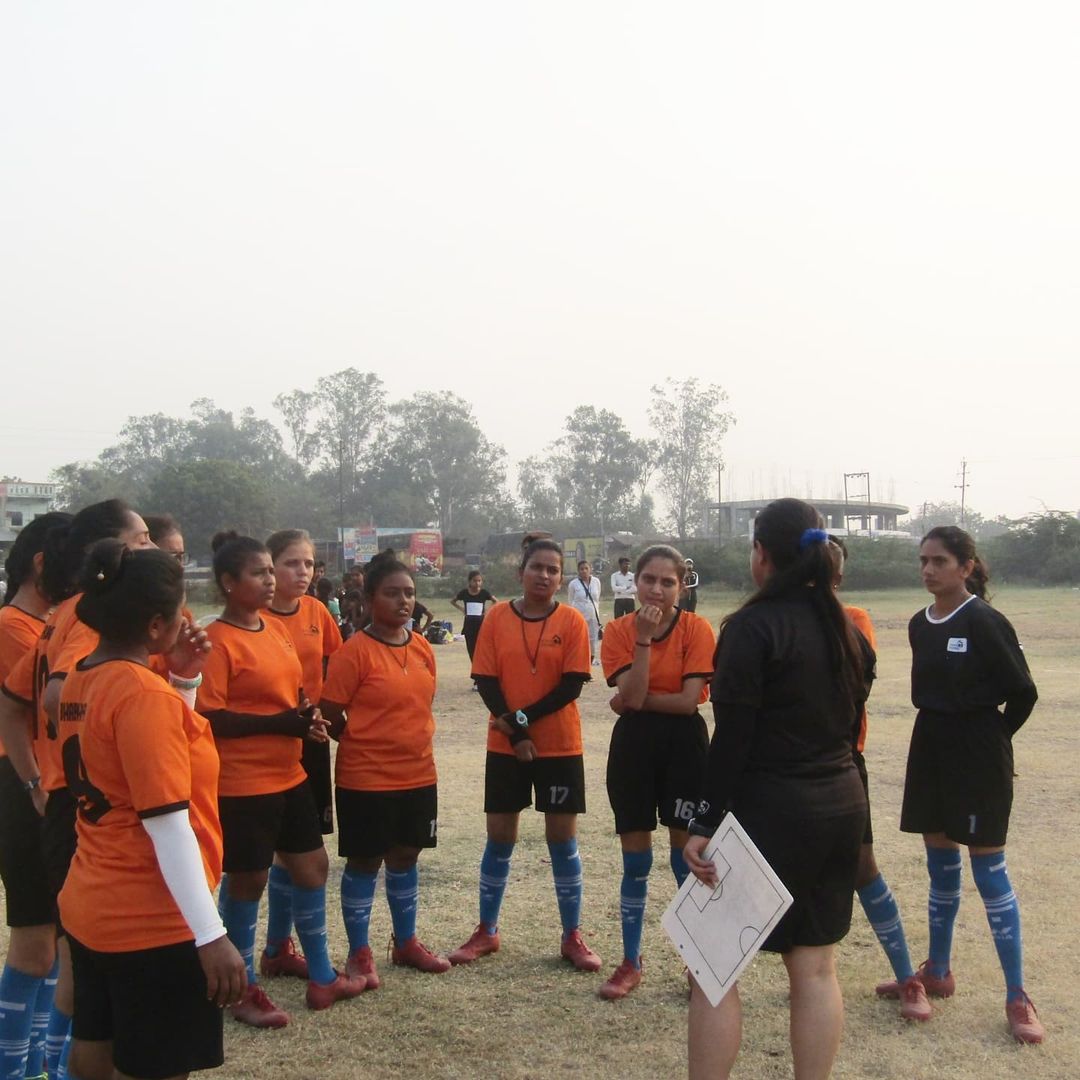
‘Toofaan Games’ and the opportunities it brings to girls
Naandi Foundation, based out of Hyderabad, is an organisation working diligently since its conception in 1998 towards the eradication of poverty and upliftment of girls and women across India.
The four events of the Toofaan Games that the girls participate in are the 50m sprint, shuttle run, standing long jump, and endurance run. These four events were selected because they are simple, easy to conduct and give the girls an opportunity to demonstrate their speed, agility, lower body strength and stamina.
About 130 girls make it to the final stage of the Toofaan Games each year and for many of them, the games are the first time they set foot outside their villages.
A significant point to emphasise here is that the initiative is led by women entirely, right from coaching to the results. The existing infrastructure at Naandi — under the Nanhi Kali programme — has propelled the movement in a short span of time.
The ‘Nanhi Kali after-school tuition centres’ are managed by a young woman from the same community as the girls. When sports were introduced, these tutors were to deliver the weekly sports drills and practices.
“In the first year it was optional for tutors to become ‘sports allies’. About half of them said that they wouldn’t do it because they didn’t know what it was. By the second year, everyone wanted to do it,” Rohini says.
The tutors initially went in not knowing what to expect, but once they experienced it, everyone wanted to be a part of it.
The first event, back in 2020, vindicated their belief about the benefits of sports and physical activity, and it was a result of the organisation inculcating sports into their work and regular programming.
Initially, videos and photos of the girls doing these sports drills were sent back and forth over WhatsApp to the sports allies. To streamline this process further, Naandi decided to create its own app called SportStar to create a database.
Now, once a week, a video of a sports drill is sent out to roughly 6,000 sports allies. This allows for feedback and collaboration among all of them as everyone shares their training videos, which ensures that the app has more content for their perusal.
“Our girls cannot relate to YouTube videos of foreigners doing these drills. With this exchange of videos, we have ended up creating more resources for our girls to imbibe information from. The app is not open to the public,” says Rohini.
“If a girl is doing some exercise well, then we use that video during our drills across the country,” she adds. This is what the organisation terms ‘Sports for Life’.
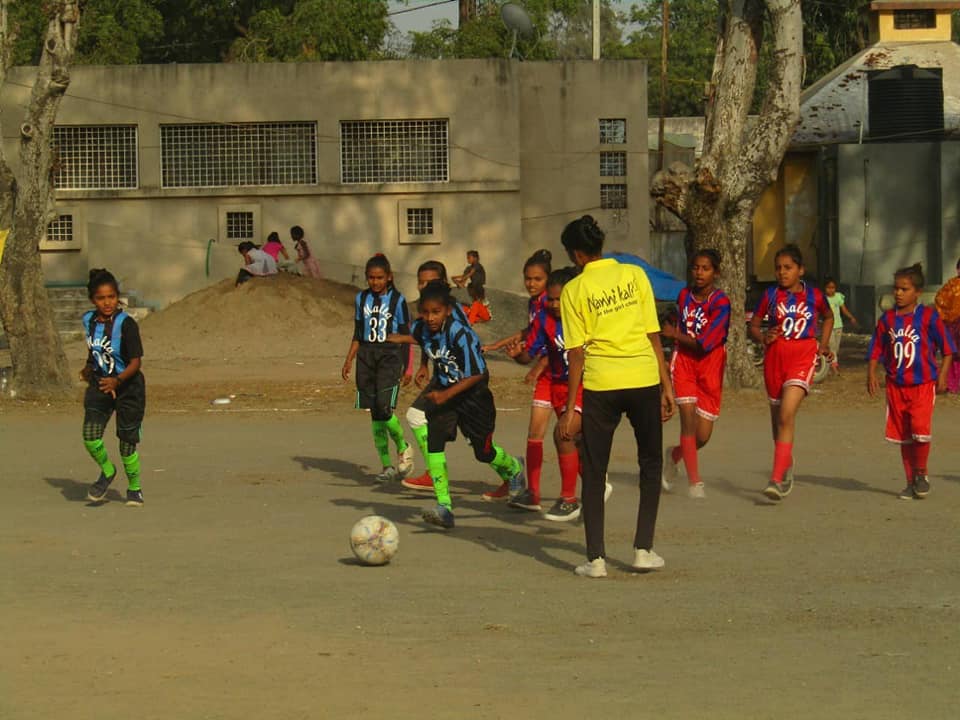
What do girls do in ‘Sports For Life’?
Over the last four years, ‘Sports for Life’ has lived up to both its name and objective to make sports a part of everyday life for girls starting from the age of six.
Under this initiative, one weekly sports class is delivered on SportStar. And, from August each year to the following January, there is a Toofaan Games sweep that goes across the country — about 6000 villages in 9 states — as widely spread as Darjeeling in the north-east to Bharuch in the west. A subset of the girls also participate in regular football coaching.
Every young girl now enjoys one sports class per week where they not only play but also learn about body movement, nutrition and menstrual health management. It is a fun programme which lets all the girls willingly participate in it.
Inculcating sportsmanship and inclusivity while playing is another important principle that these girls are taught. “Every girl learns to include everyone else, it doesn’t matter if they are good or bad at the sport,” Rohini says.
While the academics programme is given in nine languages, the SportStar app uses photos and minimal English text. Limiting it to English was a deliberate decision and has had the additional benefit of helping the sports allies pick up and improve their English, which appears to have worked.
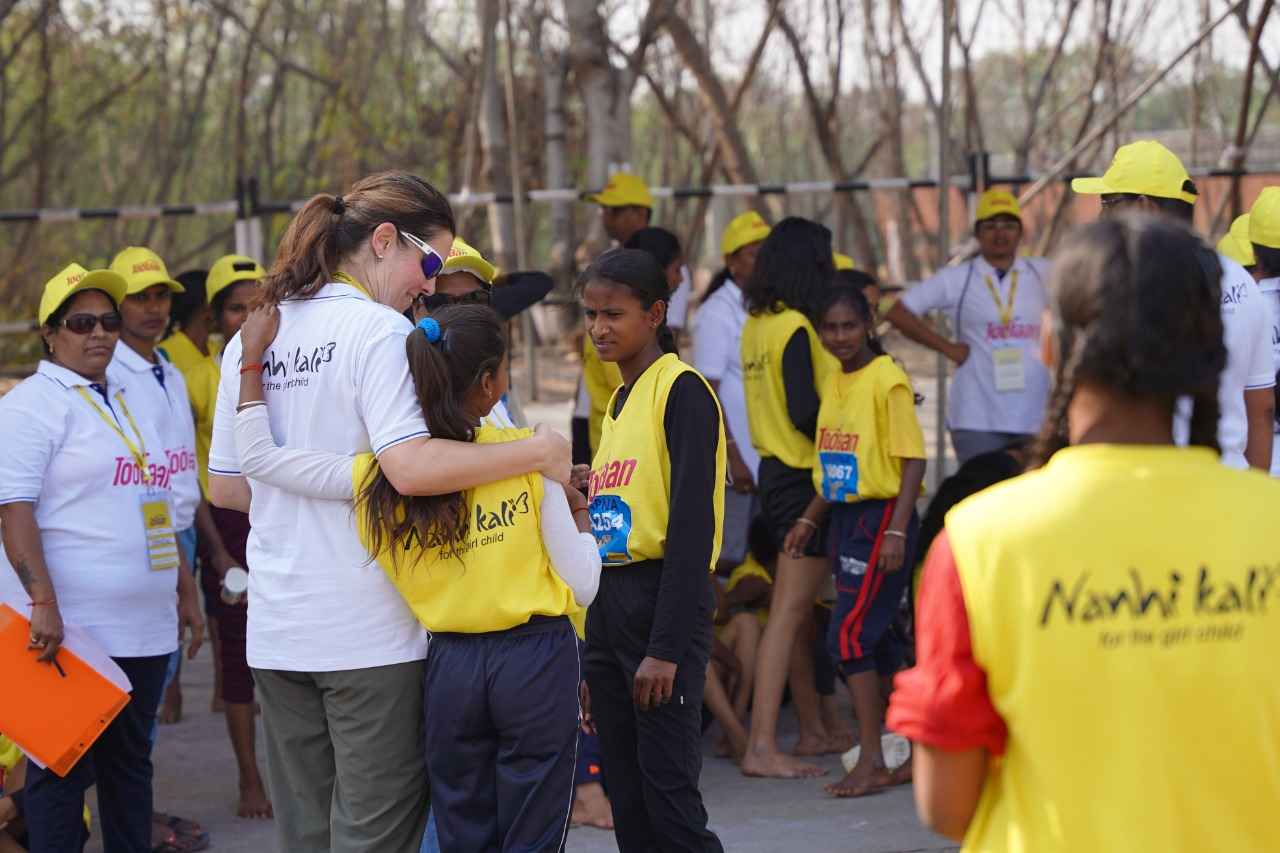
How was it received at the grassroots level
Vishakha Bhale Vyas is one of the 475 sports allies who work in the Bharuch district of Gujarat. This district has around 12,500 girls aged between eight and 14 years.
Responsible for mobilising and supporting the field teams in the district, she also pays attention to the tournaments announced by the local and district-level sports associations so that the girls there can participate in those events.
According to her, there is such a passion for sports that in the district they have branched out into football as well from other track and field sports and now have about 20 teams of girls.
“No one thought that in this Jambusar block, which is very backward, there would be so many girls’ football teams,” she says. “In fact, our girls’ teams have been the only ones to participate in all the inter-district tournaments. Most other schools, even the private ones, don’t even have a football team for girls.
The success of the football teams in turn led to the announcement of a training programme for coaches. “Now we have women football coaches who have D-Level Certification in Coaching from the All-India Football Federation (AIFF),” Vyas adds.
She has also benefited personally. “As a student, I played kabaddi and kho kho – I was in my college team. But I never thought that sports would enter my life again and that it would enrich my work with the community. It has helped me improve my health. I also find it to be refreshing, it breaks any monotony that may come into my routine.
Poornima Singh, who manages the programme in the Prayagraj district in Uttar Pradesh, works with 7,856 girls, along with 271 sports allies. She discovered that the girls did not need any motivation to play sports. “They are ready 24×7 to go to the playground and play,” she says.

According to her, the biggest challenge has been persuading parents to let their daughters travel out of their district to participate in the Toofaan Games. “In many cases, no one in their family has ever traveled outside the district, never sat in a train, never stayed in a hotel. For them to imagine their little child doing all these things is very difficult,” she says.
The sports allies have also had to get creative to conduct events for the Toofaan Games. While villages have a lot of open space, they are either used for cultivation or are uneven and covered with plants and boulders.
So, they sometimes enlist the villagers to help clear a space for the events, or they lay down tracks which have only two lanes. “There are so many ways in which they find the solutions,” Singh says.
Personally, Singh has enjoyed coaching sports so much she got her E Level Coaching Certificate from AIFF (All India Football Federation) earlier this year. “All day I work hard in the office, but in my mind, there is this excitement that I must finish all my work by 5:30 pm so that I can go to the ground and play,” she says. “Another personal benefit for me from sports is that I sleep very well.”
Difficulty finding suitable spaces to play in is something Ruchi Upadhyay, another sports ally, also experiences in Varanasi district, Uttar Pradesh. “We would love to have good spaces,” she says. “By ‘good space’ I mean level playing ground, no bumps, no pebbles, or stones or small bushes. And an ideal good space would be where we also have washrooms and drinking water.”
Despite the lack of these spaces, the Varanasi programme has 12,603 girls and 499 sports allies. Upadhyay said she feels happiest when girls from her area qualify for the finals of the Toofaan Games.
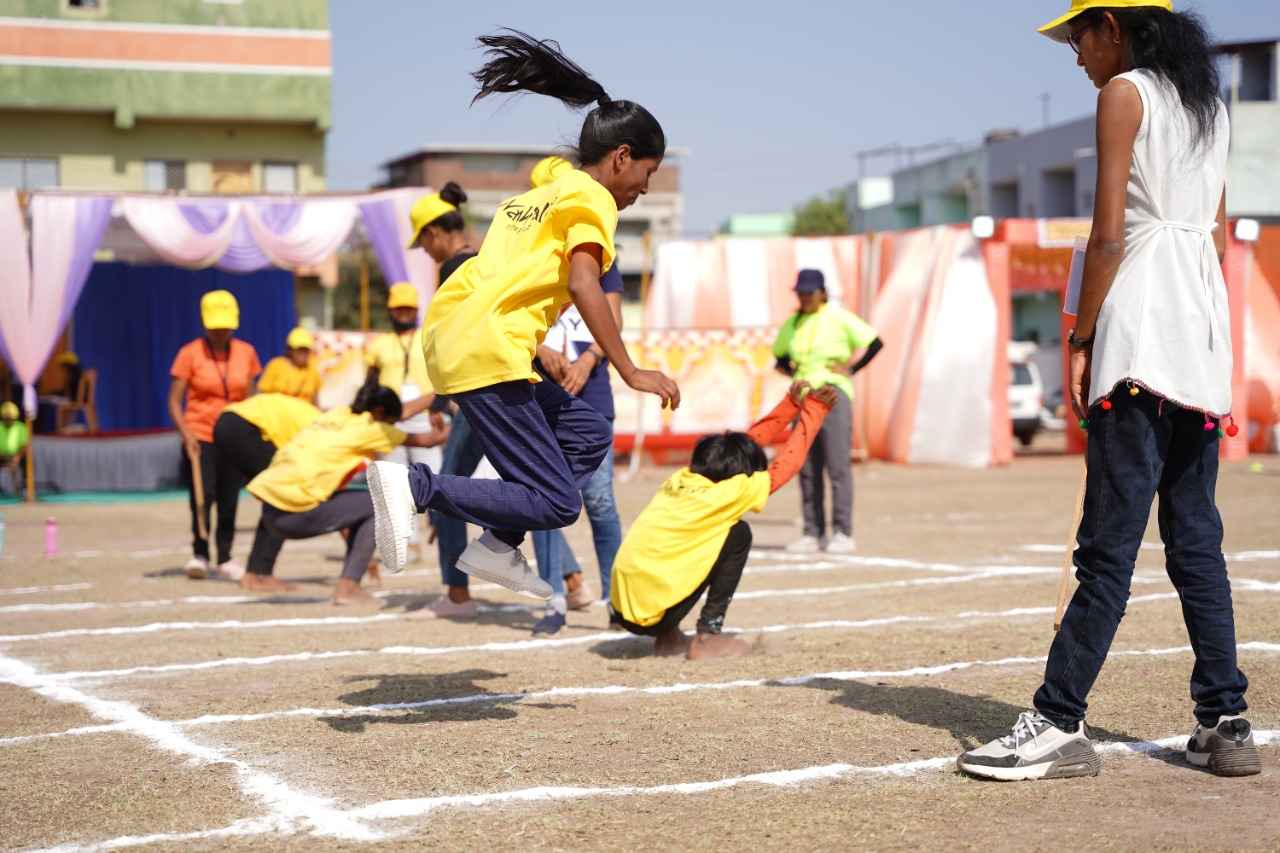
Another good thing to come out of this activity was that over the last few years, several sports allies have received certification from official sporting bodies in India to become administrators and coaches, even independent of the Toofan Games.
Ask the students if they enjoy the event and pat come the replies from them all.
“I like all the Toofaan Games events,” one participant says. “But I like football more. I want to play more and I also want to be good in my studies.”
“My favourite is sprint and shuttle run,” says another participant. “I have learnt that I should keep sipping water and now I go for a run every morning.”
The overall objective of the programme will always remain ‘sports for all’, rather than promoting excellence in sports. “There is bound to be talent that we spot,” Mukherjee said. “And having spotted it, we will do what is required. But that is not our main objective. We want girls and women to play sports until their last living day.”
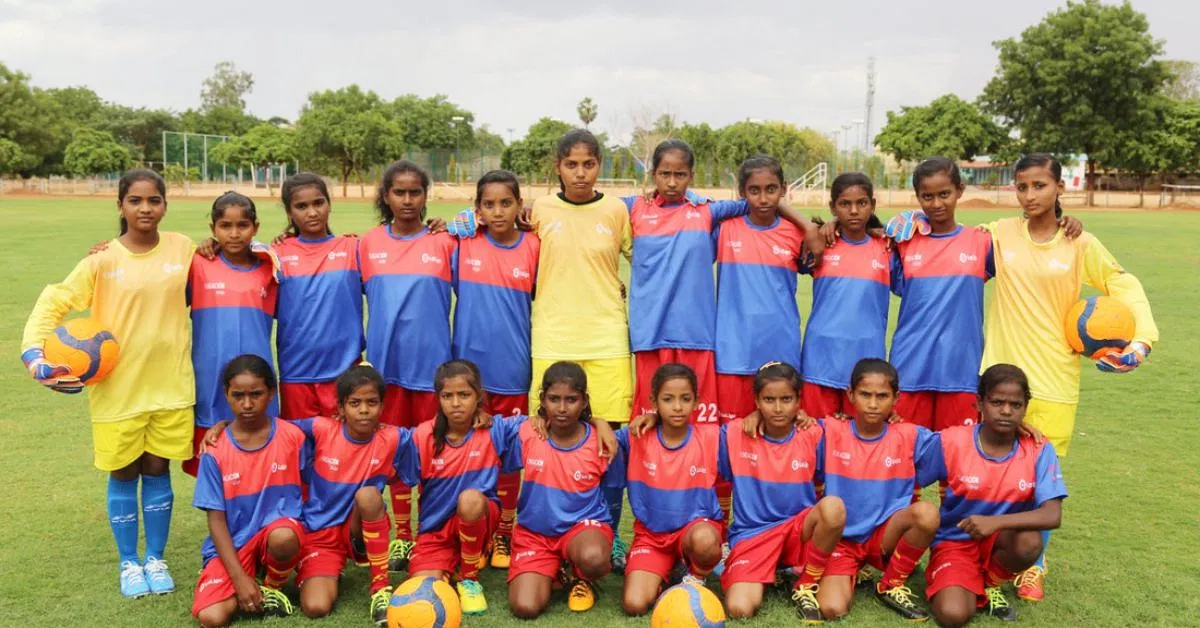
In Rural Andhra, Lakhs of Kids Fight Gender Bias, Chase Higher Education With Sports
When B Anusha was in Class 7, her physical education (PE) teacher encouraged her to play for her school in the Rural Cricket Tournament for Girls, hosted by Anantapur Sports Academy (ASA).
Anusha comes from a remote village called Bandlapalli in Anantapur district, Andhra Pradesh. Her parents are farmers who have a small plot of land, and her father also works as a tractor driver for hire. Playing sports seriously was not considered an option for her. But the then 13-year-old left-arm spinner was named the best player of the tournament and received a scholarship from ASA to attend their residential academy.
Anusha, now 20, has since played for the Andhra Pradesh Under-16, Under-19, and Women’s Senior State teams.
“Playing sports at ASA has helped [me] in many ways,” she says. “It made me more confident than I ever was. It gave me exposure and financial help through playing for the senior State team, which I needed …Alongside, playing sports at ASA has given me the opportunity to train in one of the best cricket facilities in the state as I was able to improve cricketing skills.”

Anusha is currently in her third year of under-graduation at PVKK Degree College, where she is pursuing a B Com in computers. But her dream is “to continue to play cricket at a higher level and [one day] represent the Indian women’s team.”
A major emphasis on the grassroots
ASA is part of the Rural Development Trust (RDT), which has been working in communities in Andhra Pradesh for over 50 years. In the late 70s and 80s, the Trust taught kabaddi to encourage children to be active, but this was done in an informal way. Sport became a formal, and integral, part of its programmes only in the late 90s. That’s when the ASA was born. Over time, the ASA programmes have expanded to include eight sports — cricket, football, hockey, judo, tennis, kabaddi, softball and, most recently, archery.
“In the beginning, our programme used to provide financial and material support to teams travelling out to participate in tournaments,” Moncho Ferrer, programme director of RDT, says. “Later on, we started organising events such as grassroots level tournaments and camps to ensure children access their fundamental right to play in a safe and quality playing space, which later grew to a year-long programme with an emphasis on holistic development of children at all levels of the programme.”
The organisation’s programmes follow a traditional pyramid structure. At the bottom is their grassroots programme, which is conducted entirely in government schools in each community. Then there are the development centres, and at the top sits the residential programme, which is based at the ASA sports village that was built between 2000 and 2002.

“The major emphasis lies on the grassroots,” Sai Krishna Pulluru, executive director of ASA, says. “All the sports have a grassroots programme except tennis. We also have around 104 or 105 [development] centres, which include youth clubs, government schools, and sports centres.”
According to Pulluru, the difference between the grassroots and development centres is that the latter have their own physical infrastructure, such as computer labs and classrooms, and they provide English classes as well as nutrition. The residential programme at Anantapur Sports Village is for children who have the potential to excel at sport.
ASA also runs leagues from August to December for each of their sports where matches are held every Sunday. The rural cricket tournament is the longest-running league, and arguably the organisation’s crown jewel. According to Pulluru, over 100 villages used to participate in the tournament, with the final being held in Anantapur at a pristine cricket ground. However, it was recently restructured and now features 16 teams each in U-12 mixed-gender, U-16 and U-19 age categories. It has also been renamed the Ananta Premier League (APL).
ASA also runs an athletics meet exclusively for girls.
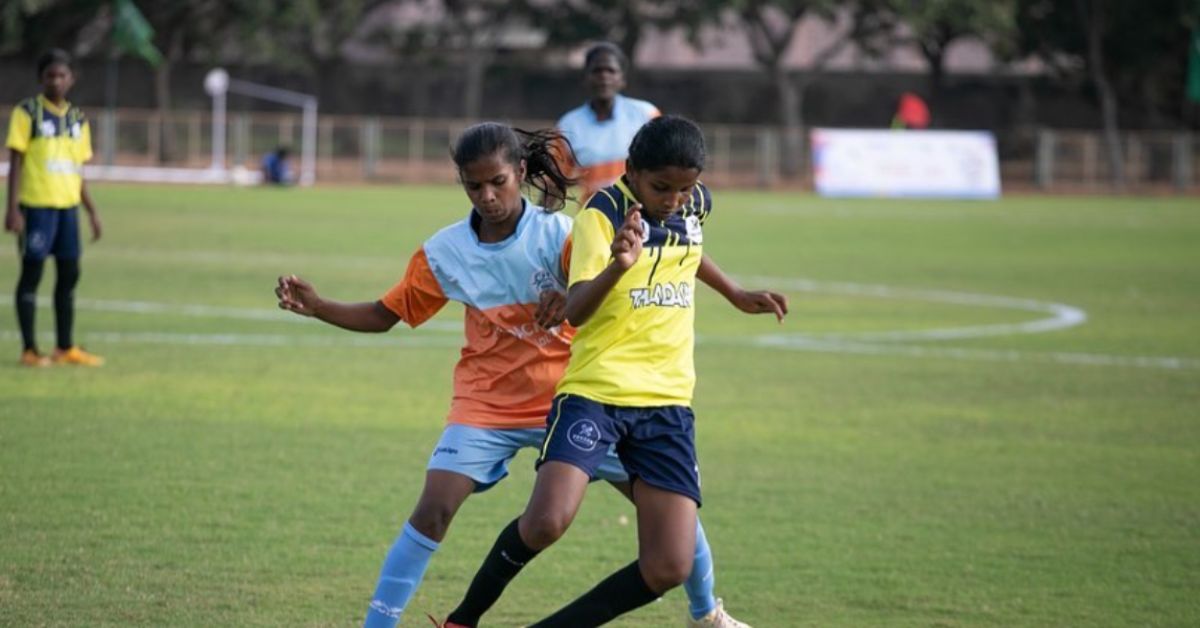
“In these leagues, we scout talent and provide full scholarship — academics, boarding and lodging, and access to competition — to whoever can pursue this,” says Pulluru.
‘Joy and happiness’
The programmes have been tailored for children ranging between the ages of 6 and 18. Over time, life skills were added to the programmes, for instance, a coach may conduct a session on topics such as communication, inequality, or gender awareness.
Pulluru estimates that 6,700 children were part of the programme at the beginning of the season, and roughly 1.5 lakh have gone through the programme over the years.
“It is a dream for me to be part of this kind of programme,” he notes. “When I finish my work, step out of my office, and watch the children playing, I can see the real joy on their faces. That is what gives me a sense of joy and happiness. That is one thing that really drives me.”
In 2016-17, ASA started a mixed-gender festival where girls and boys compete together, though this is reserved only for younger children. The age depends on the sport — for cricket it is U-12, for football under-9, and for softball U-14. Participants are brought to a single location once in two months and the festival is held over two days, with the final round being played at the Anantapur Sports Village.
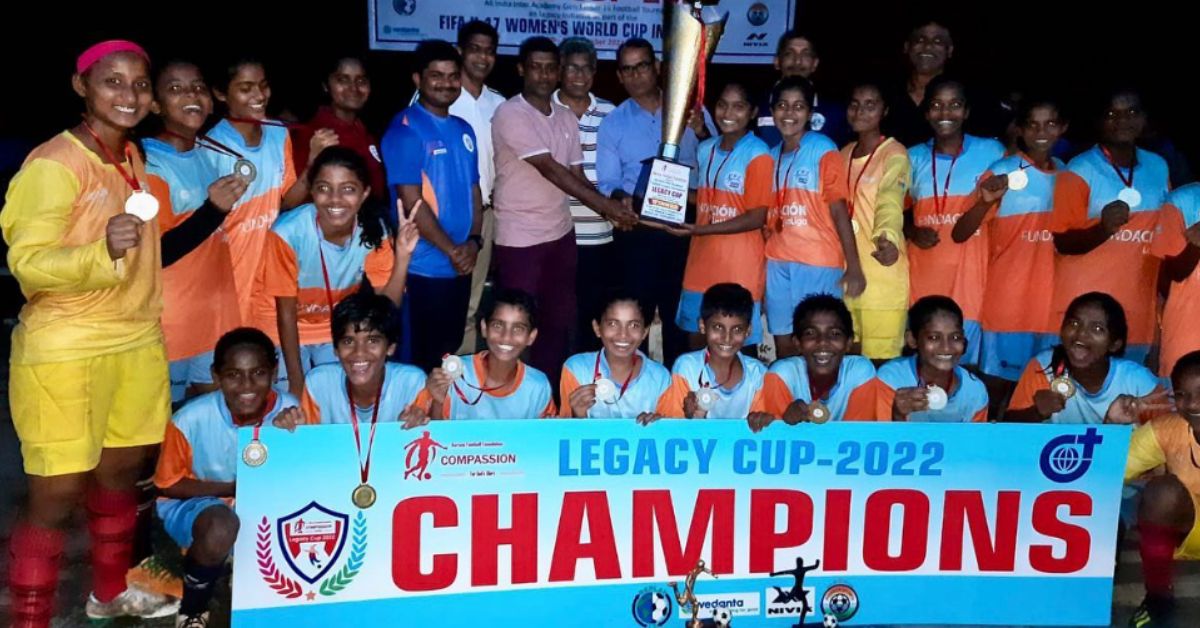
Y Lahari, a 12-year-old from Dharmavaram, was first introduced to ASA when he played in the mixed-gender U-9 football cup a few years ago. In 2021, at the age of 11, he was given a scholarship to attend the academy.
“I like playing [football] because I can make a lot of new friends and also visit other places,” Lahari says. “I can maintain fitness by playing sports regularly.” He credits ASA with teaching him new skills such as teamwork and communication, as well as values such as respect and fair play.
“I am interested in refereeing,” he adds. “I want to become a professional FIFA referee where I can referee national and international matches.”
ASA relies mainly on volunteer coaches and physical education teachers – “They are the backbone of the programme,” Pulluru says. The programme has also created a pathway for participants to become coaches. “Not everyone can make it to the next level. To build a sports culture, you need more coaches.”
ASA encourages those who are interested to join the one-year Youth Leadership Programme and become volunteer or shadow coaches. As part of the programme, they are given the chance to organise events and conduct workshops. ASA then supports those who complete the programme and wish to become professional coaches by helping them get their coaching licences from the various state associations.
In particular, ASA wants to increase the number of female coaches in rural areas. “Though there is still a long way to go, it’s worth noting the changing perceptions among the wider community (particularly parents, teachers) about boys and girls equally playing sports,” Ferrer says. “The programme has enabled youth to gain skills to enhance their higher education and livelihood opportunities, particularly as a coach and/or a referee.”
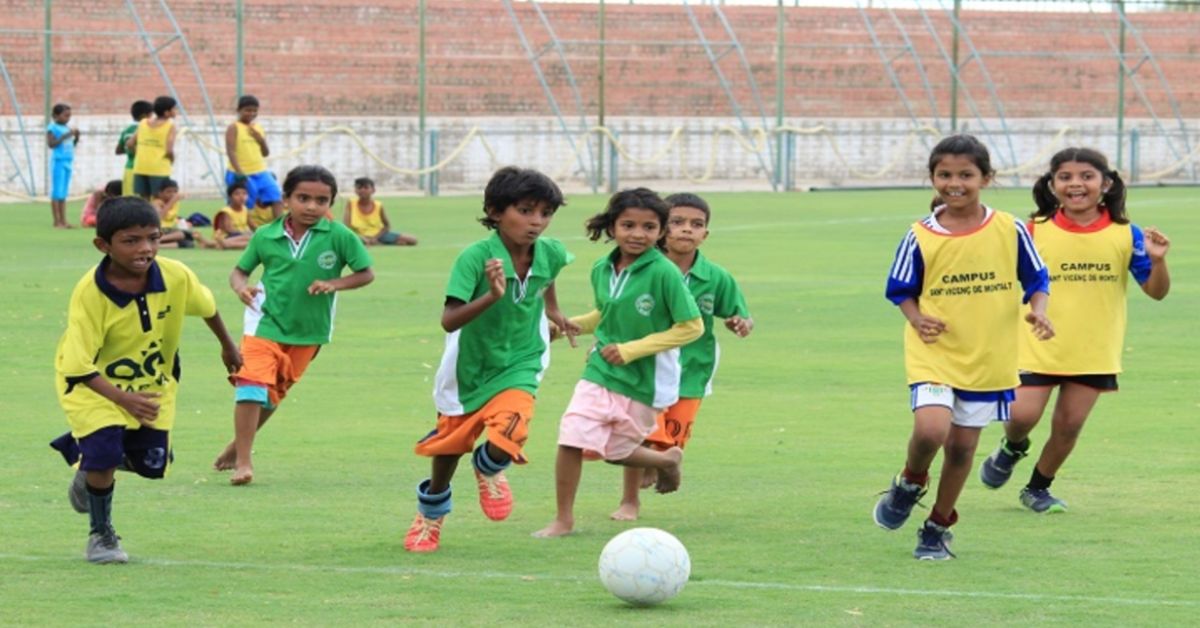
‘Sports made me who I am today’
One of those coaches is P Hindu Kumar (24). He was selected for the residential programme as a 14-year-old in 2014 and is now a coach with the organisation. He comes from a village called D Honnur, and says his parents were “very happy” when he was selected, because it meant he would get a good education and could also keep playing sports.
“Sport made me who I am today,” Kumar said. “It gave me a career opportunity as a coach, [and] I learned a lot through playing sport; most importantly believing in myself and in my team, and helping each other to achieve a goal, which are the most important aspects in any part of life or profession.”
The programme also taught him to develop empathy, he says. “[The] programme supported me when I was in need, as I come from a family where my parents are farmers and daily wage workers,” Kumar says. “Today I can display the same qualities as a person and professional working with children who have the same background as mine.”
To measure the outcomes of its programmes, ASA uses different parameters for each level of their pyramid – Grassroots, League and Empower. At the grassroots level, they use the number of the children they have in the programme plus the number of clubs they have set up. In the case of the leagues, which are open to all the clubs, they measure the number of children who participate from each club in the league. At the empower level, they track the number of youth leaders and volunteers in the programme, as well as the number of internships and employment opportunities that they can facilitate.
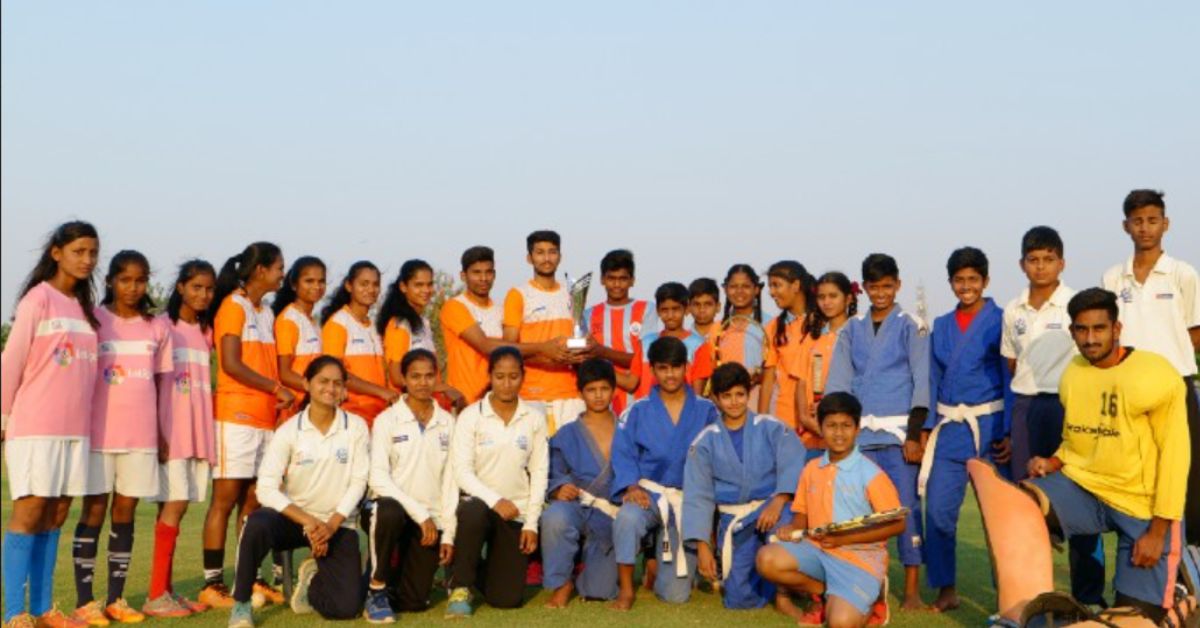
ASA also uses a socio-emotional development index to track qualities such as self-esteem and self-confidence among the children, as well as social skills such as communication and relationship building. The organisation has also developed a gender equality index that at the programme level factors in the number of female coaches, the ratio of girls to boys in each centre, and the overall ratio of girls to boys across all their programmes. ASA also has a section on gender in its questionnaire for children between the ages of 10 to 15 that aims to measure their perception of gender equality. Students must rate how much they agree or disagree with statements, such as “I believe members of the opposite gender can equally participate in sport” and “I believe everyone is equal”.
As far as funding goes, ASA benefits from being part of the Rural Development Trust, which has its own sources of revenue. On top of that, the academy has project partners such as the La Liga Foundation and the Rafael Nadal Foundation. However, according to Pulluru, funding from corporates remains challenging because of a lack of information on how they can use CSR funds in tribal and rural areas.
“In the early years of ASA, many had questioned what an NGO had to do with sports, but now we see numerous sports for development programs doing great work across India,” Ferrer says. “So, we feel humbled to see the trust we placed in a new programme back in the early 2000s has managed to evolve and grow to become this big in reaching approximately 8,000 children every year in eight different sports. Over the years, we have had numerous individual achievements, but of late, to share, I see B Anusha, recently being shortlisted for the Women’s Premier League (WPL) auction as an accomplishment for her and our programme.”






